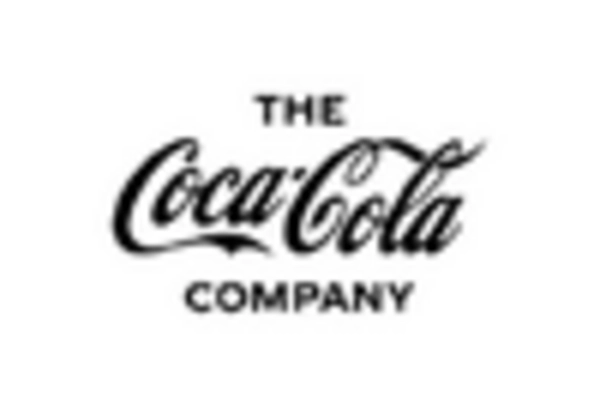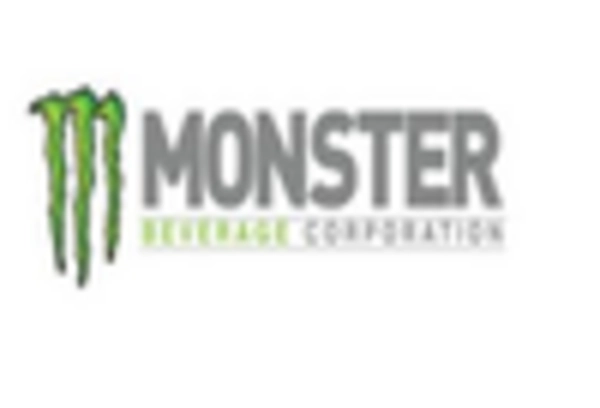Sustainability Trends
Sustainability is becoming an essential consideration for consumers in North America, influencing their purchasing decisions in the functional beverages market. As environmental concerns rise, consumers are increasingly favoring brands that prioritize eco-friendly practices, such as sustainable sourcing and recyclable packaging. This shift is prompting companies within the functional beverages market to adopt greener practices, which not only appeal to environmentally conscious consumers but also enhance brand loyalty. The market is likely to see a significant increase in demand for organic and sustainably produced beverages, potentially leading to a market growth of 10% by 2027. This trend indicates a broader movement towards responsible consumption and production.
Rising Health Consciousness
The increasing awareness of health and wellness among consumers is a primary driver of the functional beverages market in North America. As individuals become more informed about the benefits of nutrition and hydration, they are gravitating towards beverages that offer functional benefits. This trend is reflected in the market, where functional beverages are projected to reach a valuation of approximately $200 billion by 2026. Consumers are actively seeking products that enhance their physical and mental well-being, leading to a surge in demand for beverages fortified with vitamins, minerals, and probiotics. The functional beverages market is thus experiencing a shift towards products that not only quench thirst but also contribute to overall health, indicating a significant transformation in consumer preferences.
Innovative Product Development
Innovation in product formulation is a crucial driver for the functional beverages market in North America. Companies are increasingly investing in research and development to create unique beverages that cater to diverse consumer needs. This includes the incorporation of adaptogens, superfoods, and plant-based ingredients that appeal to health-conscious consumers. The functional beverages market is witnessing a rise in products designed for specific health benefits, such as improved digestion, enhanced energy, and stress relief. As a result, the market is expected to grow at a CAGR of around 8% from 2025 to 2030, driven by the introduction of novel products that resonate with evolving consumer preferences.
Convenience and On-the-Go Consumption
The fast-paced lifestyle of consumers in North America is driving the demand for convenient, on-the-go functional beverages. Busy schedules and the need for quick, healthy options are leading consumers to seek beverages that can easily fit into their daily routines. The functional beverages market is responding to this demand by offering ready-to-drink options that provide health benefits without compromising convenience. This trend is reflected in the growing popularity of single-serve packaging and portable formats, which are expected to account for a substantial share of the market by 2026. As consumers prioritize convenience, the market is likely to expand, with an anticipated growth rate of 7% annually.
Digital Marketing and Social Media Influence
The rise of digital marketing and social media platforms is significantly impacting the functional beverages market in North America. Brands are leveraging these platforms to engage with consumers, promote their products, and build brand awareness. Social media influencers play a pivotal role in shaping consumer perceptions and driving trends within the functional beverages market. This digital engagement is fostering a community of health-conscious consumers who share their experiences and recommendations online. As a result, companies are increasingly focusing on targeted marketing strategies to reach specific demographics, which is likely to enhance market penetration and drive growth. The influence of social media is expected to contribute to a market expansion of approximately 9% by 2028.


















Leave a Comment